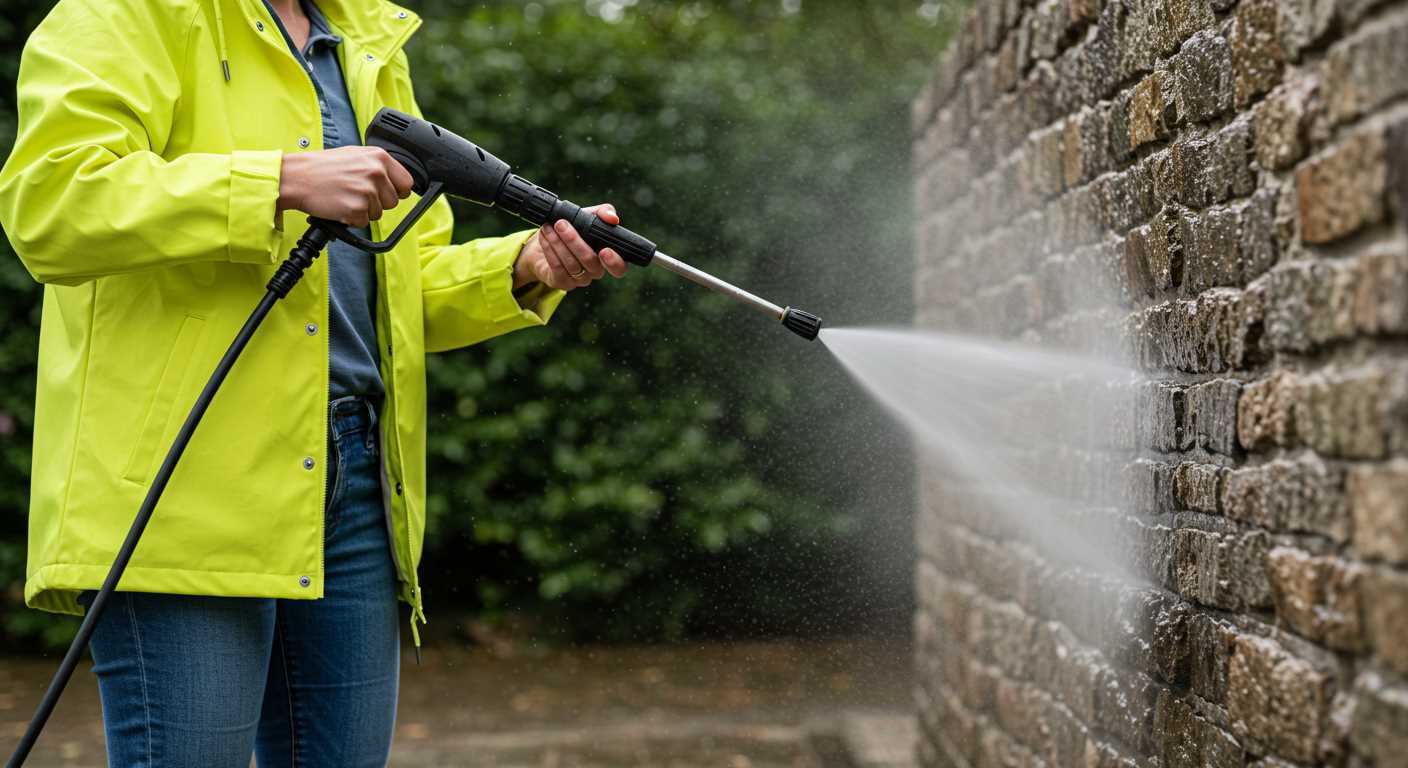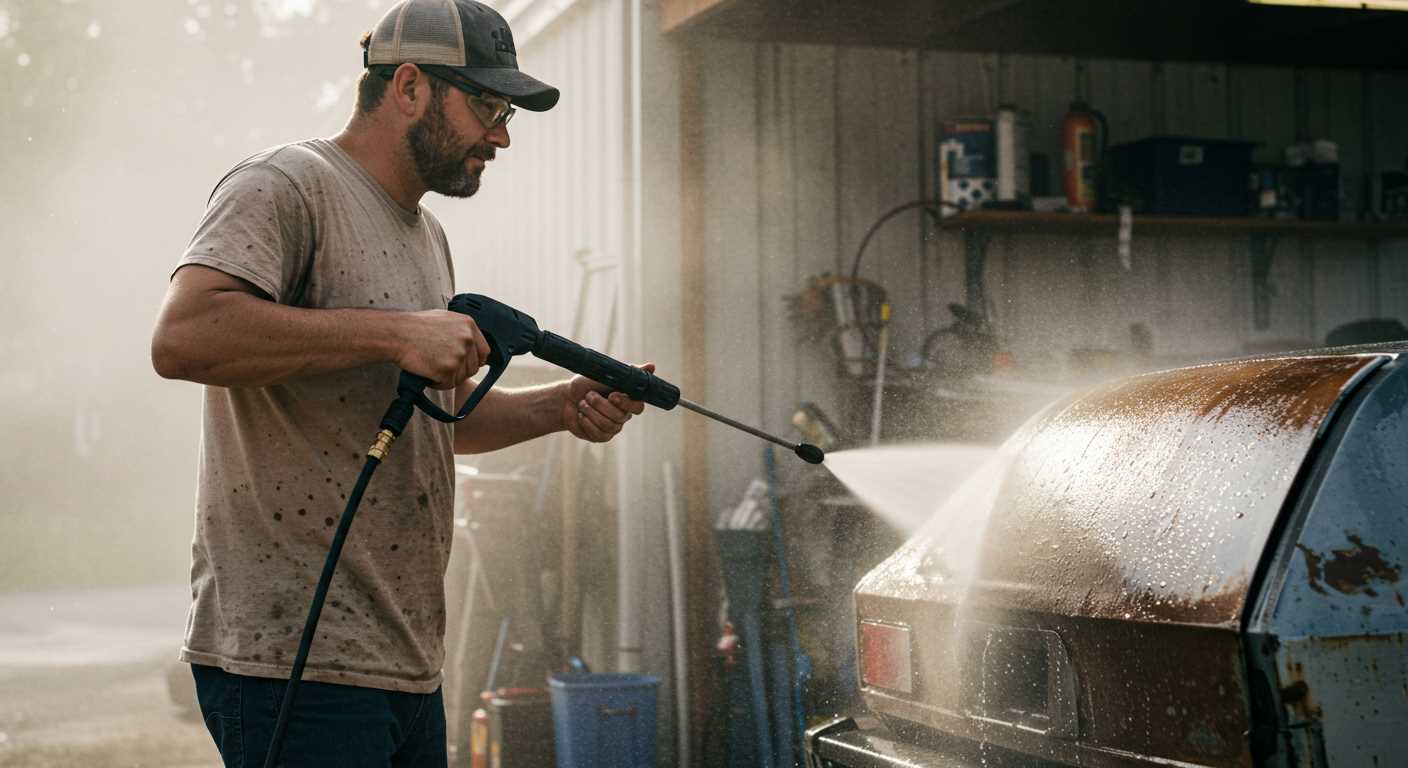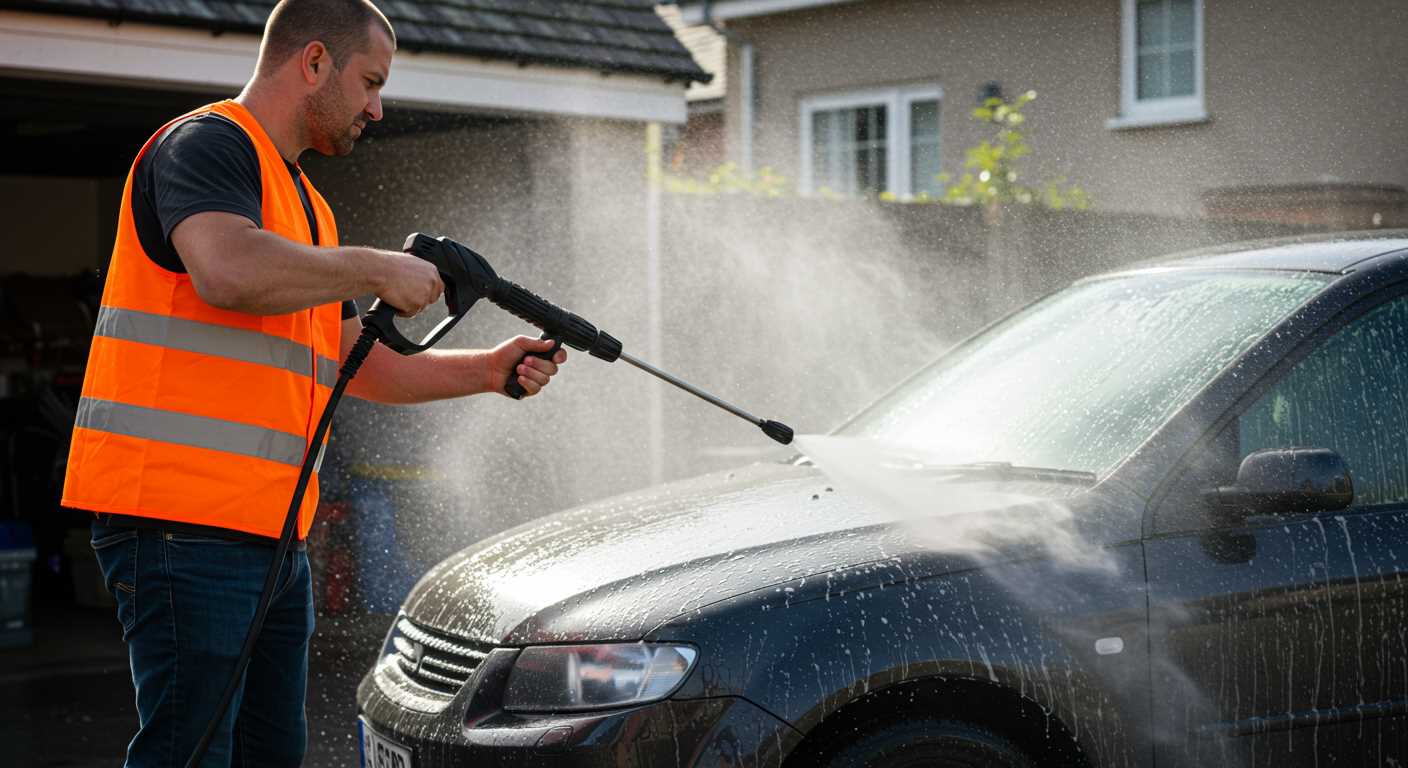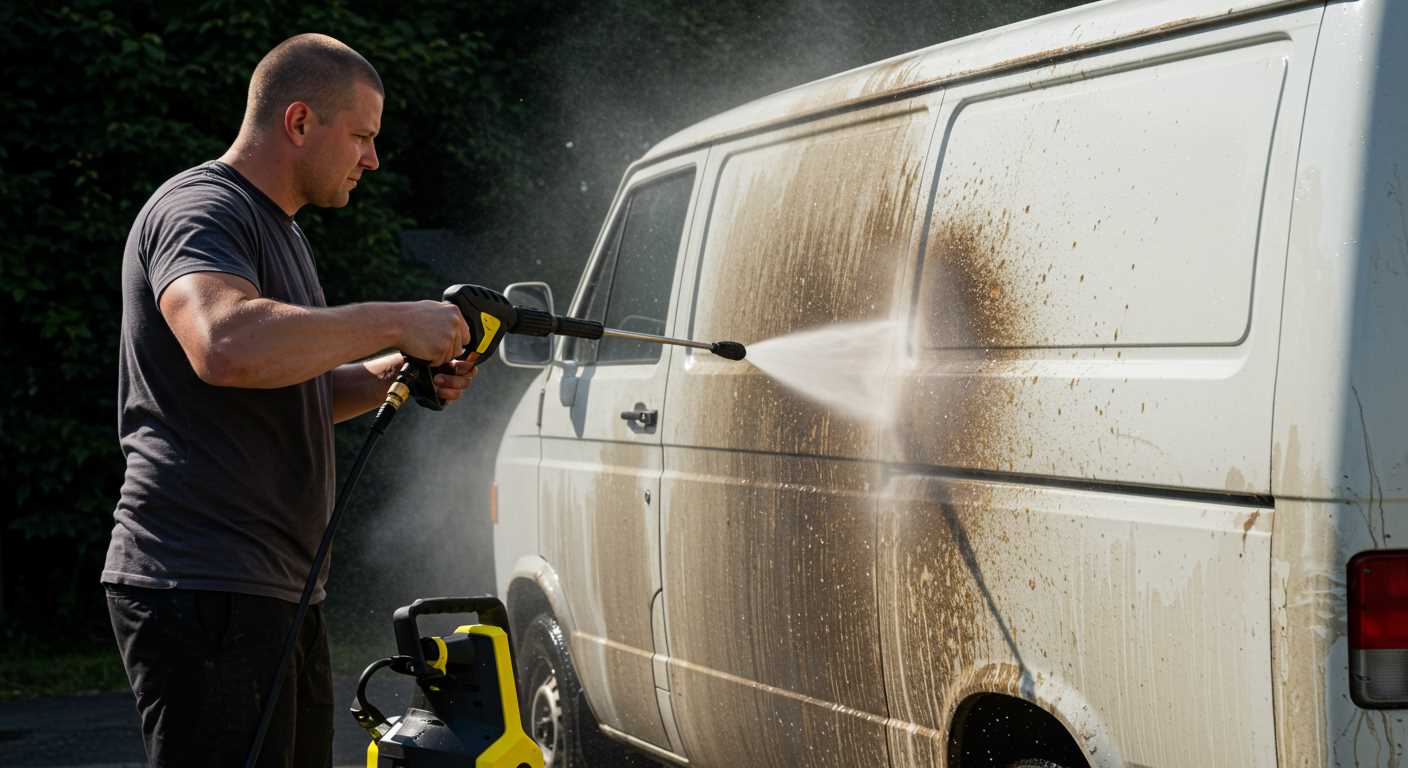




Are you tired of looking at that old, peeling paint on your concrete surfaces? If so, you’re not alone. Many homeowners and DIY enthusiasts struggle with the daunting task of paint removal, especially when it comes to tough surfaces like concrete. In this article, I will share my insights on the best pressure washer nozzles specifically designed for stripping paint off concrete, making this tedious job much more manageable.
This guide is perfect for anyone looking to rejuvenate their outdoor spaces, from homeowners wanting to refresh their driveways to professionals in the cleaning industry. I will discuss the different types of pressure washer nozzles available, their specific functions, and how they can effectively tackle paint removal tasks. You will also find tips on selecting the right nozzle for your pressure washer and techniques to maximise efficiency while ensuring safety.
By the end of this article, you will have a comprehensive understanding of which pressure washer nozzles are best suited for stripping paint from concrete surfaces. Armed with this knowledge, you’ll be well on your way to restoring the appearance of your concrete and achieving professional-looking results without breaking the bank.
Choosing the Right Nozzle for Effective Paint Removal
When it comes to stripping paint off concrete surfaces, selecting the appropriate pressure washer nozzle is crucial for achieving optimal results. Each nozzle type offers a different spray pattern and pressure, which can significantly affect the efficiency of the paint removal process. Understanding these differences will help you make an informed decision tailored to your specific needs.
Pressure washer nozzles typically vary in their spray angles, which range from a narrow jet to a wide fan. The angle of the nozzle can determine how concentrated the water pressure is on the surface, influencing both the speed and effectiveness of paint removal. A well-chosen nozzle can enhance your productivity while minimizing potential damage to the concrete.
Understanding Nozzle Types
There are several nozzle types to consider when tackling paint removal:
- Zero-degree nozzles: These provide a concentrated stream of water, ideal for tough, thick paint layers. However, they must be used with caution to prevent damage.
- 15-degree nozzles: A good option for removing paint, as they deliver a powerful spray while covering a wider area than zero-degree nozzles.
- 25-degree nozzles: These are suitable for less stubborn paint and can help speed up the process without risking damage to the concrete surface.
- 40-degree nozzles: Best for rinsing and cleaning, but not as effective for paint removal.
In addition to nozzle type, consider the pressure rating of your pressure washer. A higher PSI (pounds per square inch) is often more effective for removing paint, especially from porous surfaces like concrete. However, always balance pressure with caution to avoid etching or damaging the concrete.
In conclusion, selecting the right nozzle for paint stripping off concrete involves understanding the specific requirements of your project. By matching the nozzle type and pressure to the paint’s characteristics and the concrete’s durability, you can ensure efficient and effective paint removal without causing unnecessary harm to the surface.
Understanding Pressure Ratings for Concrete Surfaces
When considering the use of a pressure washer for paint stripping off concrete, it is essential to understand the pressure ratings associated with various nozzles. The effectiveness of a pressure washer largely depends on its PSI (pounds per square inch) rating, which indicates the force of the water being expelled. A higher PSI can remove more stubborn materials, but it also increases the risk of damaging the surface if not used correctly.
Concrete is a durable material, but it can still be susceptible to damage from excessive pressure. Therefore, knowing the appropriate pressure ratings for concrete surfaces is crucial for achieving optimal results without compromising the integrity of the surface.
Pressure Ratings Explained
Pressure ratings for concrete surfaces can be categorised into several ranges:
- Low Pressure (500-1500 PSI): Suitable for light cleaning tasks, such as removing dirt and mildew.
- Medium Pressure (1500-3000 PSI): Effective for stripping paint and tackling more stubborn stains.
- High Pressure (3000+ PSI): Generally used for heavy-duty tasks, but caution is needed to avoid surface damage.
It is important to match the pressure rating with the specific task at hand. Using a pressure washer with a PSI rating too high for the job can lead to issues such as etching or chipping of the concrete surface.
Choosing the Right Nozzle
The type of nozzle used with a pressure washer also plays a significant role in determining the effectiveness of paint stripping. Different nozzles provide various spray patterns and widths, impacting the concentration of pressure applied to the surface.
- 0-degree Nozzle: Produces a narrow, high-pressure spray, best for tough stains but can damage concrete if not used carefully.
- 15-degree Nozzle: Offers a wider spray, suitable for paint removal while reducing the risk of surface damage.
- 25-degree Nozzle: Ideal for general cleaning, providing a balance between pressure and coverage.
- 40-degree Nozzle: Best for rinsing and light cleaning tasks, with minimal risk to the surface.
Understanding the pressure ratings and selecting the appropriate nozzle can significantly enhance the efficiency of paint stripping from concrete surfaces while ensuring that the concrete remains intact and undamaged.
Techniques for Safe and Efficient Paint Stripping
Stripping paint from concrete surfaces can be a challenging task, but with the right techniques, it can be accomplished effectively and safely. Understanding the nature of the paint and the concrete is crucial, as different types of paint may require specific approaches for removal. Additionally, safety should always be a priority, ensuring that both the environment and the user are protected during the process.
One of the most effective methods for paint stripping is the use of a pressure washer with the correct nozzle. Selecting the right pressure setting and nozzle type can significantly influence the efficiency of the job. It is essential to start with a lower pressure to avoid damaging the concrete, gradually increasing it as needed. Furthermore, using a wide spray pattern helps distribute the pressure evenly, reducing the risk of surface etching.
Safety Measures
Before beginning the paint stripping process, it is important to take certain safety precautions:
- Protective Gear: Always wear safety goggles, gloves, and a mask to shield against debris and paint particles.
- Area Preparation: Clear the area of furniture, plants, and other items that may be affected by paint stripping.
- Ventilation: Ensure the area is well-ventilated, especially if using chemical paint removers alongside pressure washing.
Efficient Techniques
To maximize efficiency while stripping paint, consider the following techniques:
- Test a Small Area: Before applying your chosen method to the entire surface, test it on a small, inconspicuous area to gauge effectiveness and impact.
- Use of Chemicals: In cases of stubborn paint, a chemical stripper may be applied before pressure washing. Follow the manufacturer’s instructions for optimal results.
- Maintain Distance: Keep the pressure washer nozzle at a safe distance from the surface to prevent damage while effectively removing paint.
By employing these techniques and prioritising safety, the process of stripping paint from concrete can be performed efficiently, yielding a clean and smooth surface ready for its next treatment.
Common Mistakes When Using Pressure Washer Nozzles
Pressure washers can be incredibly effective tools for cleaning surfaces, especially when it comes to removing paint or grime from concrete. However, improper use of pressure washer nozzles can lead to unsatisfactory results or even damage to the surfaces being cleaned. Understanding common mistakes can help users achieve optimal performance and extend the life of their equipment.
One prevalent mistake is using the wrong nozzle for the job. Different nozzles are designed for specific tasks, and selecting an unsuitable one can lead to ineffective cleaning or surface damage. For instance, using a narrow nozzle on delicate surfaces may cause etching or chipping, while a wider nozzle may not provide enough pressure to remove stubborn stains.
Other Common Mistakes
- Incorrect Distance from Surface: Maintaining an improper distance from the surface can greatly affect the cleaning process. Standing too close can lead to damage, while being too far away may not provide the necessary pressure to clean effectively.
- Neglecting to Test a Small Area: Before starting a full cleaning job, it’s advisable to test the pressure washer on a small, inconspicuous area. This helps gauge the nozzle’s effectiveness and ensures no damage occurs.
- Using the Wrong Pressure Setting: Each surface requires a specific pressure setting. Using a setting that is too high can strip paint or damage concrete, while too low a setting may not remove dirt and grime effectively.
- Inadequate Safety Precautions: Failing to wear appropriate safety gear, such as goggles and gloves, can lead to injury. High-pressure water can cause serious harm if it comes into contact with skin or eyes.
By avoiding these common mistakes, users can ensure that they get the most out of their pressure washer nozzles, achieving better results while protecting both their surfaces and equipment.
Comparing Nozzle Types: Which Works Best for Concrete?
When it comes to stripping paint off concrete surfaces, the type of nozzle you use with your pressure washer plays a crucial role in the effectiveness of the task. Different nozzles are designed for various applications, and selecting the right one can mean the difference between a successful paint removal and potential damage to the concrete. Understanding the specific functions of each nozzle type can help you make an informed decision.
Generally, pressure washer nozzles are categorized based on their spray angle and intensity. The most common angles include 0°, 15°, 25°, and 40°. Each of these angles offers a unique spray pattern that can impact the efficiency of paint stripping on concrete.
Understanding Nozzle Types
- 0° Nozzle: This nozzle delivers a concentrated, high-pressure stream of water. While it is effective for tough stains and paint, it can also risk damaging the concrete if not used carefully.
- 15° Nozzle: This nozzle has a wider spray pattern than the 0° option, providing a balance between pressure and coverage. It’s ideal for heavy-duty tasks like paint stripping without the extreme risk of damage.
- 25° Nozzle: Offering an even broader spray, this nozzle is suitable for general cleaning tasks. While it may not be as aggressive as the 15° or 0° nozzles, it can still effectively remove peeling paint from concrete surfaces.
- 40° Nozzle: This nozzle is designed for lighter cleaning and is the least aggressive. It is better suited for rinsing surfaces rather than stripping paint.
In summary, selecting the appropriate nozzle for paint stripping from concrete involves considering the balance between pressure and potential surface damage. The 15° nozzle often emerges as a strong contender for this task, providing a powerful yet manageable spray that can effectively remove paint while minimising the risk to the underlying concrete. Always test in a small area first to gauge effectiveness and avoid damage.
Essential Accessories for Optimal Paint Stripping Results
When tackling the challenging task of stripping paint off concrete surfaces, having the right accessories can significantly enhance the efficiency and effectiveness of your pressure washer. Selecting appropriate attachments and tools can make a world of difference in achieving a clean finish without damaging the underlying concrete.
Among the various accessories available, certain items stand out as particularly beneficial. Understanding how each accessory contributes to the paint stripping process can help you make informed decisions for your project.
Key Accessories to Consider
- Rotary Nozzle: This accessory combines high pressure with a rotating action, allowing for more thorough paint removal. It is especially effective on stubborn paint layers.
- Surface Cleaner: Designed for flat surfaces, a surface cleaner attachment can speed up the process by covering more area in less time, ensuring an even clean.
- Extension Wand: An extension wand allows for greater reach, making it easier to strip paint from hard-to-reach areas without straining.
- Specialised Chemicals: Using paint-stripping solutions in conjunction with your pressure washer can enhance results, breaking down paint more effectively.
- Protective Gear: Always prioritise safety with appropriate protective gear such as goggles, gloves, and masks to shield yourself from paint particles and chemicals.
By utilising these essential accessories, you can achieve optimal results in your paint stripping endeavours. Each component plays a crucial role in ensuring efficiency while protecting the integrity of the concrete surface beneath.
Maintenance Tips for Your Pressure Washer Nozzles
Proper maintenance of your pressure washer nozzles is essential to ensure optimal performance and longevity. Nozzles are crucial components that directly affect the efficiency of your cleaning tasks, especially when it comes to paint stripping off concrete surfaces. By following some simple maintenance tips, you can keep your nozzles in top condition and avoid costly replacements.
Regular maintenance not only helps in maintaining the effectiveness of your pressure washer but also enhances safety during operation. Neglecting your nozzles can lead to clogs, reduced pressure, and even damage to your equipment. Here are some essential maintenance tips to consider:
- Clean After Use: Always rinse your nozzles after each use to remove any debris or paint residue that may clog them.
- Inspect for Damage: Regularly check your nozzles for cracks or wear. Replace any damaged nozzles immediately to maintain performance.
- Store Properly: Store nozzles in a dry place, away from direct sunlight and extreme temperatures to prevent degradation.
- Use the Right Nozzle: Ensure you are using the correct nozzle for your specific cleaning task to prevent unnecessary wear and tear.
- Check O-Rings: Inspect and replace O-rings if they are worn or damaged to prevent leaks and ensure a proper seal.
By implementing these maintenance tips, you can extend the life of your pressure washer nozzles and maintain high cleaning performance. Regular care not only saves you money in the long run but also ensures your equipment is always ready for your next project.
Top 10 Best Pressure Washer Nozzle Paint Stripping Off Concrete




Best Pressure Washer Nozzle Paint Stripping Off Concrete
Features
| Part Number | HU-XI-201 |
| Color | 2000w 2 Gears Temp Setting |
Features
| Model | 7abd6aa0-b969-404f-a9df-c10d65f4cb7d |
| Color | Silver |
Features
| Part Number | Axfvd-752224337102 |
| Model | Axfvd-752224337102 |
Features
| Part Number | 1 |
| Model | HLW-GYQ-5000PSI-1 |
| Color | Black-orange |
Video:
FAQ:
What type of nozzle is best for stripping paint off concrete?
The best nozzle for stripping paint off concrete is typically a 15-degree or 25-degree nozzle. The 15-degree nozzle provides a concentrated jet of water that can effectively remove stubborn paint, while the 25-degree nozzle offers a wider spray that can cover more surface area. Choosing the right nozzle depends on the thickness of the paint and the condition of the concrete surface.
Can I use a pressure washer without a nozzle for paint stripping?
Using a pressure washer without a nozzle is not advisable for paint stripping. Nozzles are designed to focus the water pressure, which is necessary for effectively removing paint. Without a nozzle, the water will disperse too broadly, reducing the cleaning power and making it less effective for the task at hand. It’s best to select the appropriate nozzle to achieve optimal results.
How far should I hold the nozzle from the concrete surface when stripping paint?
When stripping paint from concrete, it’s recommended to hold the nozzle about 6 to 12 inches from the surface. This distance allows the pressure to effectively strip the paint without causing damage to the concrete. It’s advisable to test a small area first to adjust the distance as necessary based on the paint’s thickness and the concrete’s condition.
Are there any safety precautions I should take while using a pressure washer for paint stripping?
Yes, safety precautions are important when using a pressure washer for paint stripping. Always wear protective gear, including safety goggles, gloves, and sturdy footwear. Be cautious of the water spray, as it can cause injuries or damage nearby objects. Additionally, ensure that the area is free of electrical hazards and that you are working in a well-ventilated space, especially if the paint contains harmful chemicals.
What should I do if the paint does not come off after pressure washing?
If the paint does not come off after pressure washing, there are several steps you can take. First, ensure you are using the correct nozzle and that the pressure setting is adequate. You may need to repeat the process or adjust the distance from the surface. If the paint is particularly stubborn, consider using a chemical paint stripper prior to pressure washing. Always follow up with a thorough rinse to remove any residue from the chemicals used.
What type of pressure washer nozzle is best for stripping paint off concrete?
The best nozzle for stripping paint off concrete is typically a 0-degree or 15-degree nozzle. The 0-degree nozzle provides a concentrated jet of water, which is highly effective for removing stubborn paint. However, it can be too aggressive for some surfaces, potentially causing damage. The 15-degree nozzle offers a wider spray pattern while still delivering significant pressure, making it a safer choice for most concrete surfaces. It’s advisable to test on a small area first to see how the concrete reacts.



.jpg)


